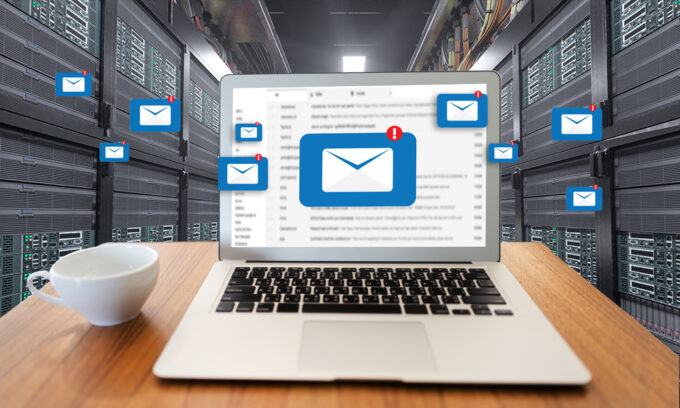While it can oftentimes be easy to look at a company from an outside view and believe that everything functions smoothly on its own and that it’s pretty simple you’d be wrong in most cases. Generally, there are a lot of moving parts that all need to work together to not cause needless losses of time and money.
One of the options that have become popular in recent years is the use of email migration services to streamline communications for a company as oftentimes it’s realized that the original email provider they chose isn’t optimal for what they’re doing so they decide to change to a completely different one in order to make things more efficient.
Why is Streamlined Communication Important?
In a world where businesses need to be agile and adaptive, streamlined communication plays a crucial role in enabling companies to respond quickly to changes, make faster decisions, and foster collaboration among employees. By having an efficient communication system in place, companies can reduce misunderstandings, minimize delays, and improve overall productivity.
What is it?

Email migration is the process of moving from one email provider to a different one. It isn’t important which providers are in question, just that the option you’re using is being changed. While the process itself sounds simple it’s important to understand that you’re moving a massive number of people, all of them need new addresses and generally, they’d want you to move many of the things from their previous provider such as emails, settings and perhaps some other things too.
An email migration service is an excellent option if you aren’t satisfied with your current provider and especially if they have some sort of limitation that prevents you from further optimizing your workflow in the company. It’s a big undertaking though so it’s important to weigh the benefits and downsides while also considering what kind of short-term and long-term impacts it could have on the workers in the company and of course profits.
Selecting the Right Email Provider

Before embarking on an email migration, it’s essential to evaluate different email providers to ensure that the new provider will address the issues and limitations you are currently facing. Some key factors to consider when selecting a new email provider include:
- Security and privacy features
- Integration capabilities with other business tools and software
- Email storage and attachment limits
- Customization options and ease of use
- Cost-effectiveness and pricing plans
Simple but big in scale
The thing with email migrations is that moving a single person or team from one provider to a different one isn’t that big of a deal and can be done relatively simply, but when we’re talking about companies that have hundreds or thousands of workers in various teams then you begin to understand just why migrations like these are carefully considered and weighed before they are attempted as there are just so many moving parts going on.
It’s very important to consider the costs of the process and the potential profits that could come from it in the long run. If you realize that you will be making more money in the long run after doing this then it would likely be worth tanking the short-term loss of profits so that you can use the increased efficiency to further push the company in the direction that you want and towards more success and money.
Email Migration Best Practices

To ensure a smooth and successful email migration, it’s important to follow best practices, such as:
- Conducting a thorough audit of your current email system to identify potential issues and data that needs to be migrated.
- Creating a detailed migration plan, including timelines, resources, and contingencies.
- Involving relevant stakeholders in the planning and execution process to ensure buy-in and support.
- Providing training and support to employees to help them adapt to the new email system.
- Monitoring the migration process closely and addressing any issues that may arise promptly to minimize disruption.
- Testing the new email system thoroughly, ensuring all migrated data is accurate and accessible, and that the system functions as intended.
- Establishing a post-migration support structure to help employees with any questions or concerns that may arise after the transition.
- Regularly reviewing and evaluating the performance of the new email system to ensure it continues to meet the company’s needs and expectations.
You may want to reconsider if…

There are certain situations where email migrations simply don’t make sense and we believe that it’s worth going over them so that you have a better idea of just how these things are usually done and what most successful companies do when considering such a big undertaking that could have a big impact.
If your current provider doesn’t cause you any sort of issues then generally you won’t want to change which makes sense. It’s also important to note that even if you do have some issues with them that they may not be big enough to warrant a migration to someone completely different as the problems may be small enough to ignore. Sometimes the issue you have isn’t solved with any of the other providers you’re considering which would mean staying with the same one and just bearing it.
It’s also important to consider the downtime that migrations cause. This of course means a temporary pause in operation which needs to be planned ahead of time. Most of the time you’ll be able to tank the temporary loss in profits but it’s important to carefully plan when it will be done to minimize losses. If you have days when you don’t work then that would be a good option, but if not then generally you’d want it to go down during days that have less work than most.
Conclusion
Email migrations are an incredible tool that allows companies to transfer to a service that will far better match their needs and wishes and we are very grateful that they exist, but they can also be a risky endeavor and certainly aren’t simple to do so there is a lot of thought that goes into this decision. We hope that this guide, complete with insights into the importance of streamlined communication, selecting the right email provider, and best practices for email migration, has helped you more easily make that choice and potentially make your company even better than it previously was.








